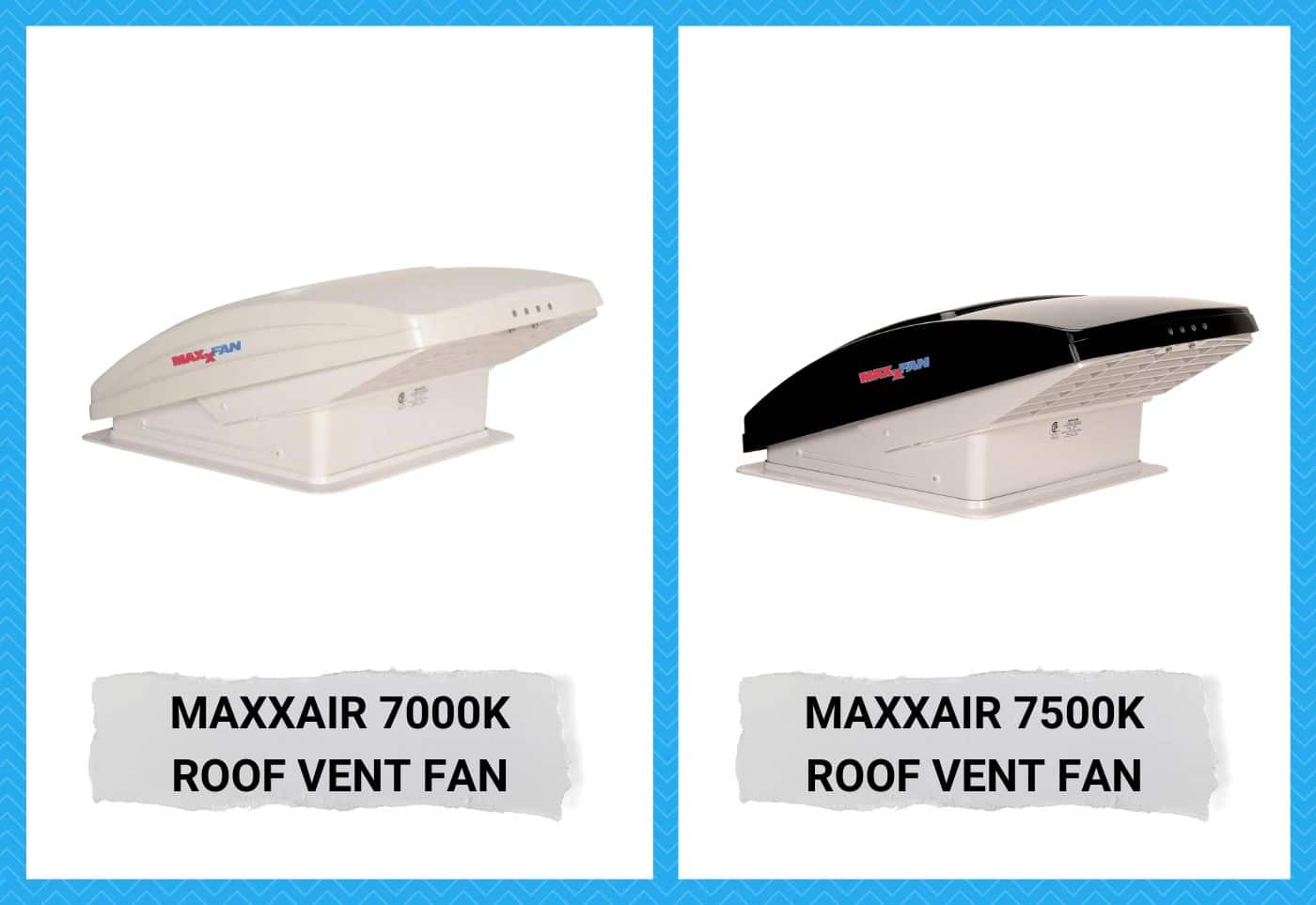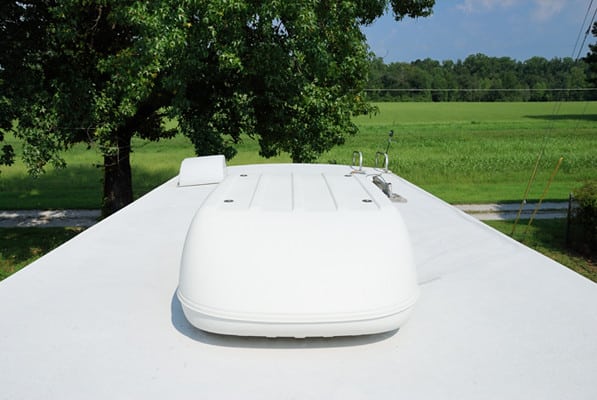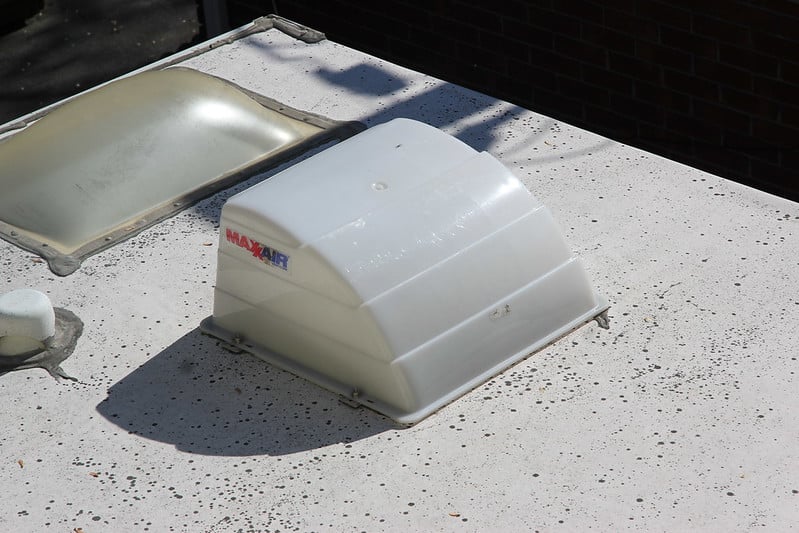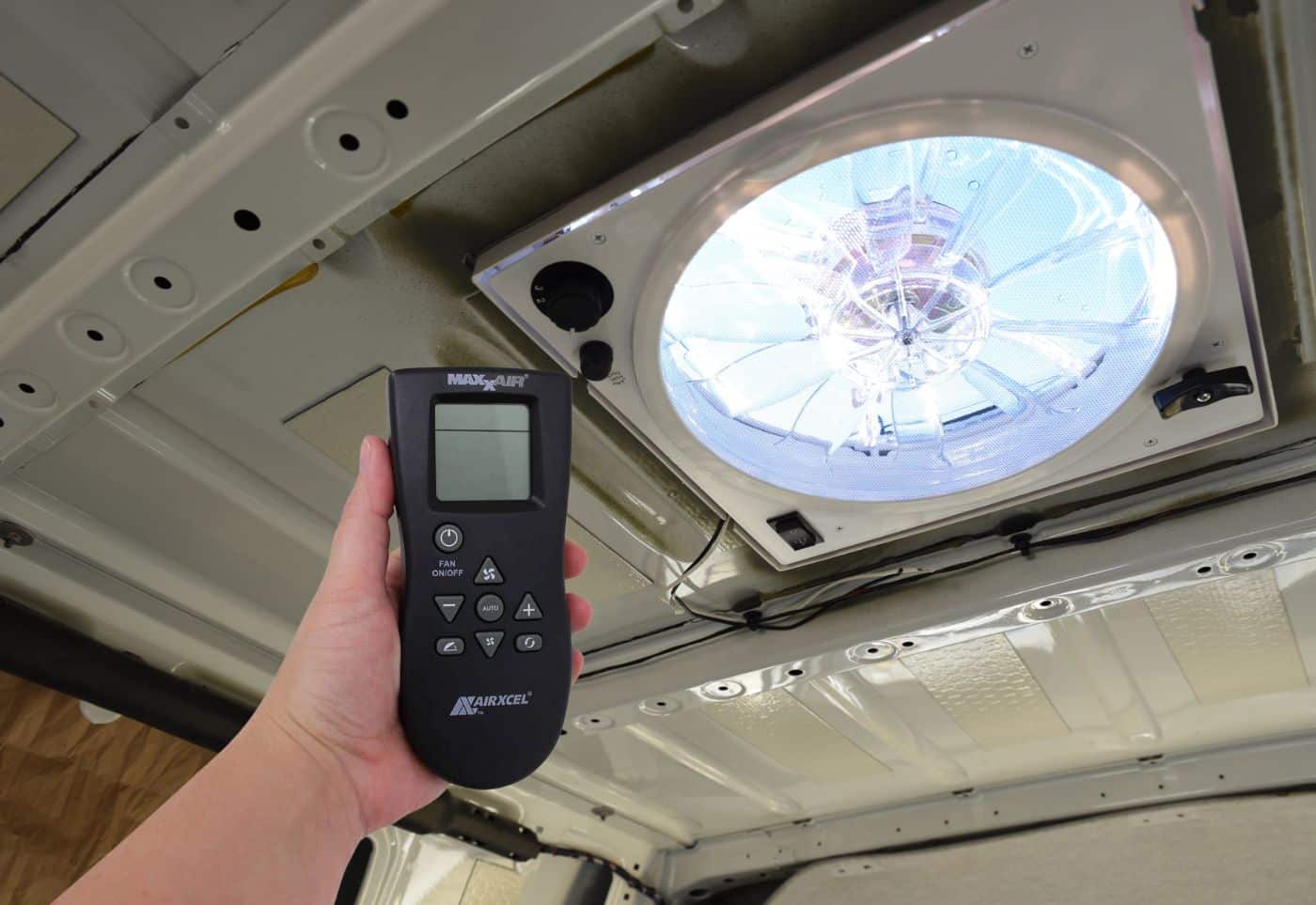
Good ventilation is vital to any occupied structure. That includes your motorhome. In fact, motorhomes need regular ventilation more than other structures because they trap heat faster and longer.
A continuous airflow keeps the RV cozy 24/7. But besides comfort, good ventilation has plenty of other benefits:
- Keeps surfaces dry – Taking a shower or washing the dishes leaves behind water splashes. Without a ventilation system, it will take at least an hour for wet surfaces to dry up, making your sink and bathroom look messy.
- Indoor air feels damp – Because the water vapor has nowhere to escape, they stay in the air. The sticky feeling you get is from that water vapor landing on your skin.
- Mold growth – Fungi and bacteria thrive in warm, humid places. Your motorhome can be their perfect breeding ground if you don’t have a fully functioning vent.
- Overheating problems – When you decide to shut off your AC to save energy and stay outside for a while, it won’t take long before the inside of your motorhome heats up. That could cause running appliances to overheat. Your refrigerator has its own ventilation system to keep the boiler from overheating. But how about the other devices?
- Keeps pollens at bay – The last thing you want during your spring or summer trip is a family member going down with hay fever. Your vent can help prevent that from happening by keeping pollens out.
This article gives an overview of the functions of a ventilation system and introduces two ideal vent models for motorhomes.
Vent Function Overview
A ventilation system consists of three main components—a fan to draw air in or out of your RV, a filter screen to keep dust, debris, and pollens out, and a duct to channel the air.
An RV vent doesn’t need ductwork because there’s no other room to ventilate, although bigger motorhomes usually have a separate vent in the bathroom.
When you switch on the vent, it forces air to flow in and out of your RV. Unlike an open window, a vent has a mechanism that regulates airflow, which explains why you can still feel the inside of your RV getting replenished with fresh air, even when all the windows are closed.
In addition, some ventilation systems, including one of the models we’ll discuss later, are reversible and have different speed settings.
Maxxair 7000k and 7500k Series
Maxxair Ventilation Solutions is known all over the RV world for its advanced ventilation products. The MaxxFan 7000K and 7500K Series are two of their more recent product lines. These two are worth checking out if you are considering replacing your RV’s vent. Below are their general features.
| Features | Maxxair 7000K | Maxxair 7500K |
|---|---|---|
| Dimensions (in) | 26 x 21.5 x 16.6 | 22.5 x 16.5 x 5 |
| Cutout Dimensions (in) | 14 x 14 | 14 x 14 |
| Power | 0.2 to 2.26 AMP @ 12-V DC | 1 to 5 AMP 12-V DC |
| Airflow | 900 CFM | 920 CFM |
| Weight | 16.72 lbs | 12 lbs |
Slimmer and More Flushed Look
You already have several items sticking out on your roof. And sometimes, you’re worried they might get caught in a low-hanging tree branch, electrical wire, or tunnel ceiling.
All protrusions must be less than two feet high to avoid these issues and keep your vehicle aerodynamic.
Maxxair vents have a distinctive slim profile, meeting these criteria. In particular, the 7000K and 7500K series stand low at 16 and 5 inches, respectively. And when you switch on the fan, the cover automatically opens, and even that only elevates the vent a few more inches.
Reversible Fan to Meet Specific Ventilation Needs
One of the most valuable features of the 7000K and 7500K series is the fan can turn two ways. Clockwise to pull air out and counterclockwise to push air in. This allows your vent to perform exactly as you want it to.
Maintaining air circulation in your RV sometimes requires you to draw out instead of drawing in air. That’s why you don’t feel any change in indoor air quality, no matter how fast the vent fan turns. This feature addresses just that.
Wireless Remote Control with a Wall-Mount Bracket
Adjusting the settings of your 7000K or 7500K vent may prove challenging if your RV’s ceiling is too high. That’s why Maxxair provided a wireless remote control with a small bracket on its back in case you want to hang it on the wall for easy access.
Like any other equipment, your vent lasts longer when controlled remotely. Pressing the buttons on the frame all the time wears out the manual control panel faster.
Plus, using the remote control is more convenient. And since it is wireless, you don’t risk accidentally pulling the wires too hard when using the remote control, damaging the connection.
Rain Covers, Not Standard Lids
Unlike other vents, Maxxair 7000K or 7500K series have built-in rain covers instead of standard lids. This prevents rain from getting in when the vent is open, and the cover is raised, allowing you to use it regardless of the weather condition.
You can maximize this feature by installing the vent with the opening facing against the road to avoid any chance of a leak.
Multiple Speed Settings
Your ventilation needs change according to the climate. You’ll need to crank up your vent if it’s too hot. Some vents have limited speed settings, making it hard to find a suitable fan speed to deal with heat.
Maxxair 7000K and 7500K, on the other hand, have ten. You can go from 10 percent to 100 percent, depending on how much air you need pulled out or pushed into your vehicle.
Withstands High Winds
You may think these vent models’ rounded bodies and edges are just for aesthetics. The truth is they are for reducing wind resistance. Not only does that minimize the impact on your RV’s aerodynamics, but it also improves the vent’s endurance to high winds.
Therefore, you can expect this equipment to need little maintenance. It might take years before the caulking and flashing succumb to wear.
So what’s the difference between the two?
Maxxair 7000k and 7500k have almost similar features. But it’s apparent that the 7500K series has more power and capacity.
Pulling in 20 cfm of air more than the 7000K series, this product line provides more airflow into your motorhome. As a result, it’s more suitable for large RVs. The 7000K series, alternatively, is perfect for camper vans.
There’s also a difference in size. The 7000k series is much bigger and taller, which is probably an issue Maxxair wanted to address by making the 7500K series.
However, if the dimension doesn’t bother you, you can go for the 7000k. It’s also cheaper, considering it’s an older model.
Conclusion
When choosing a vent for your RV, consider how much space you need to ventilate, how easy it is to install, and the features discussed above.
Maxxair 7000K and 7500K are good quality vent models but suit specific ventilation requirements. The 7500K is also a bit pricier, so you must prepare to fork out a little more if you prefer it for your RV. The best way to find out which model is ideal for your RV is to consult the RV manufacturer.



